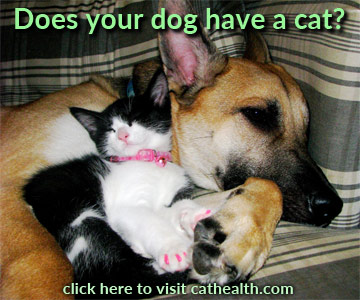Ways Dog Behavior Is Commonly Misinterpreted

Dogs have evolved living next to humans and have reached expert level status at interpreting and understanding us. We've also come a long way in interpreting and understanding their signals. But there are still some ways in which people misinterpret dogs' body language.
Tail Wagging Does Not Always Indicate Happiness
Dogs wag their tails in many circumstances, and the action doesn't always mean they are happy and feeling friendly. Dogs can wag their tails when they're nervous, excited, or even aggressive.
The trick to interpreting what a dog's wagging tail means is to look at all the other concurrent body language too. Are the facial muscles relaxed? Is the tongue lolling out and the tail wagging fast and high? That probably means happiness. Are the ears pinned back and the facial muscles tense, with a tail moving more slowly and only at mid-height? That's probably aggression. Is the head dipped and the tail wagging slowly and low to the ground? That indicates nervousness.
Learn more: "What a Dog's Tail Can Tell You."
Showing the Belly Doesn't Always Mean a Dog Wants a Tummy Rub
When a dog rolls over and shows you his belly, it doesn't always mean he wants a tummy rub. Dogs may roll over like that when they're scared. It shows submission. But, in that case, they don't necessarily want you to lean over them and touch their belly. That dog may growl or try to bite if you reach for the tummy.
If the dog looks otherwise relaxed and happy, with a non-erratic tail wag, he may want a belly rub. If he's avoiding eye contact, urinates, or has a fast, short tail wag, he probably doesn't want one.
If you don't know a dog well and he flips onto his back, it's best to pat your knees and encourage him to sit up before touching him. Rub his neck, head, or shoulder instead of his tummy, just to be extra safe.
Is It a Smile or a Snarl?
Occasionally, a dog learns to smile and uses it when he's happy. But more often, the lips being pulled back from a dog's teeth indicates fear or aggression. It may also be nervousness. If you don't know the dog well, consider any showing of teeth to be a warning. Don't make eye contact or approach the dog closer.
You May Also Like These Articles:
Play Bow: What Does This Common Dog Behavior Mean?
How to Manage Your Dog's Over-The-Top Greetings
What Your Dog's Tail Can Tell You
Why Do Dogs Chase Their Tails?
Disclaimer: This website is not intended to replace professional consultation, diagnosis, or treatment by a licensed veterinarian. If you require any veterinary related advice, contact your veterinarian promptly. Information at DogHealth.com is exclusively of a general reference nature. Do not disregard veterinary advice or delay treatment as a result of accessing information at this site. Just Answer is an external service not affiliated with DogHealth.com.
Notice: Ask-a-Vet is an affiliated service for those who wish to speak with a veterinary professional about their pet's specific condition. Initially, a bot will ask questions to determine the general nature of your concern. Then, you will be transferred to a human. There is a charge for the service if you choose to connect to a veterinarian. Ask-a-Vet is not manned by the staff or owners of DogHealth.com, and the advice given should not delay or replace a visit to your veterinarian.



